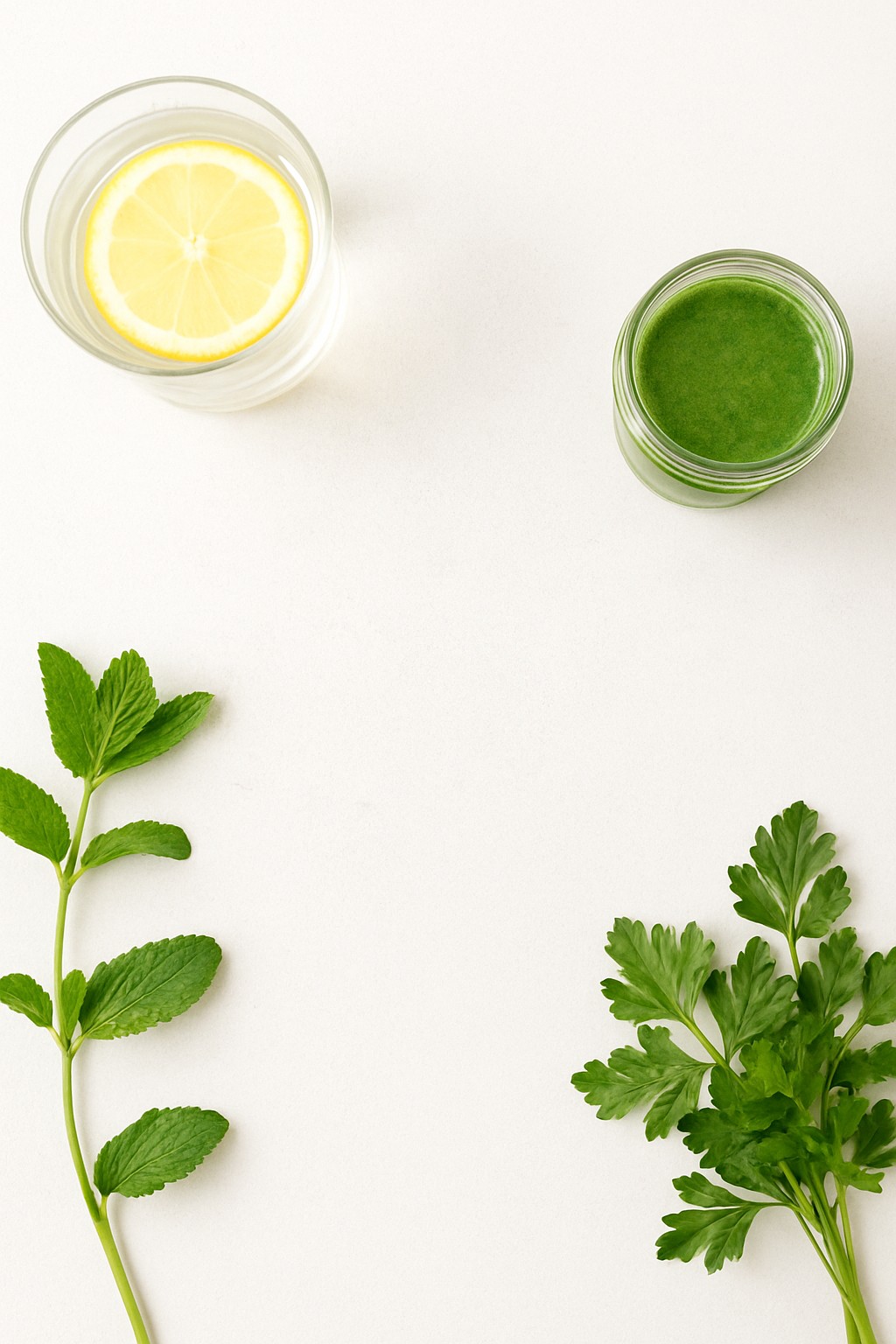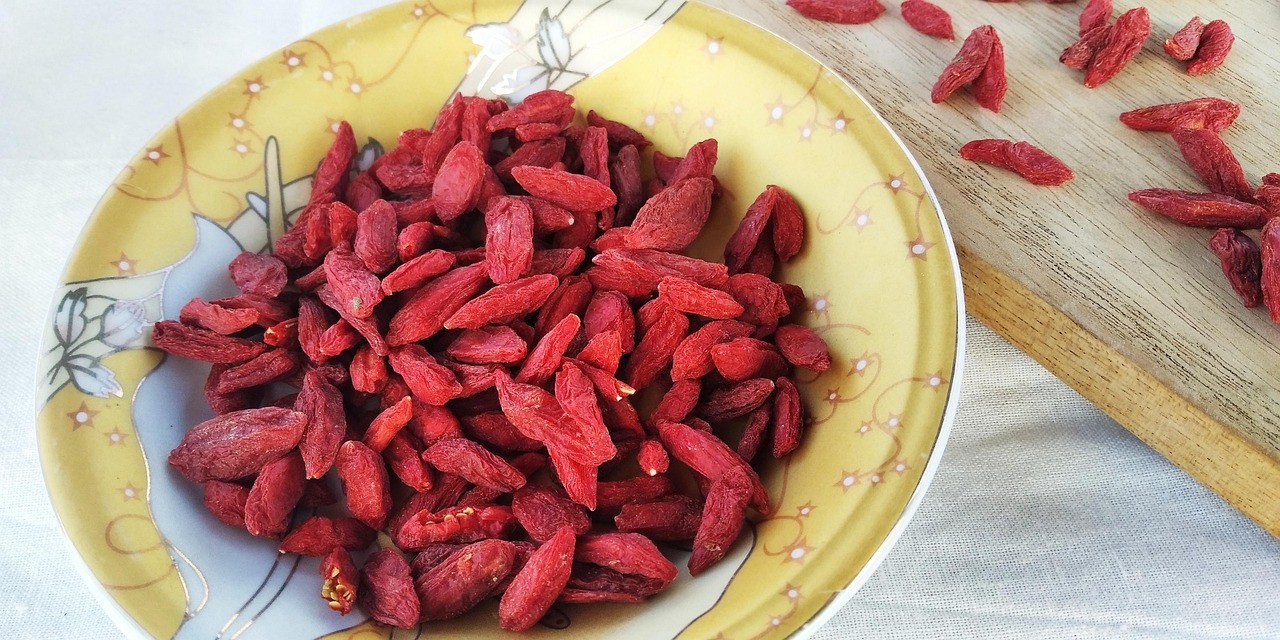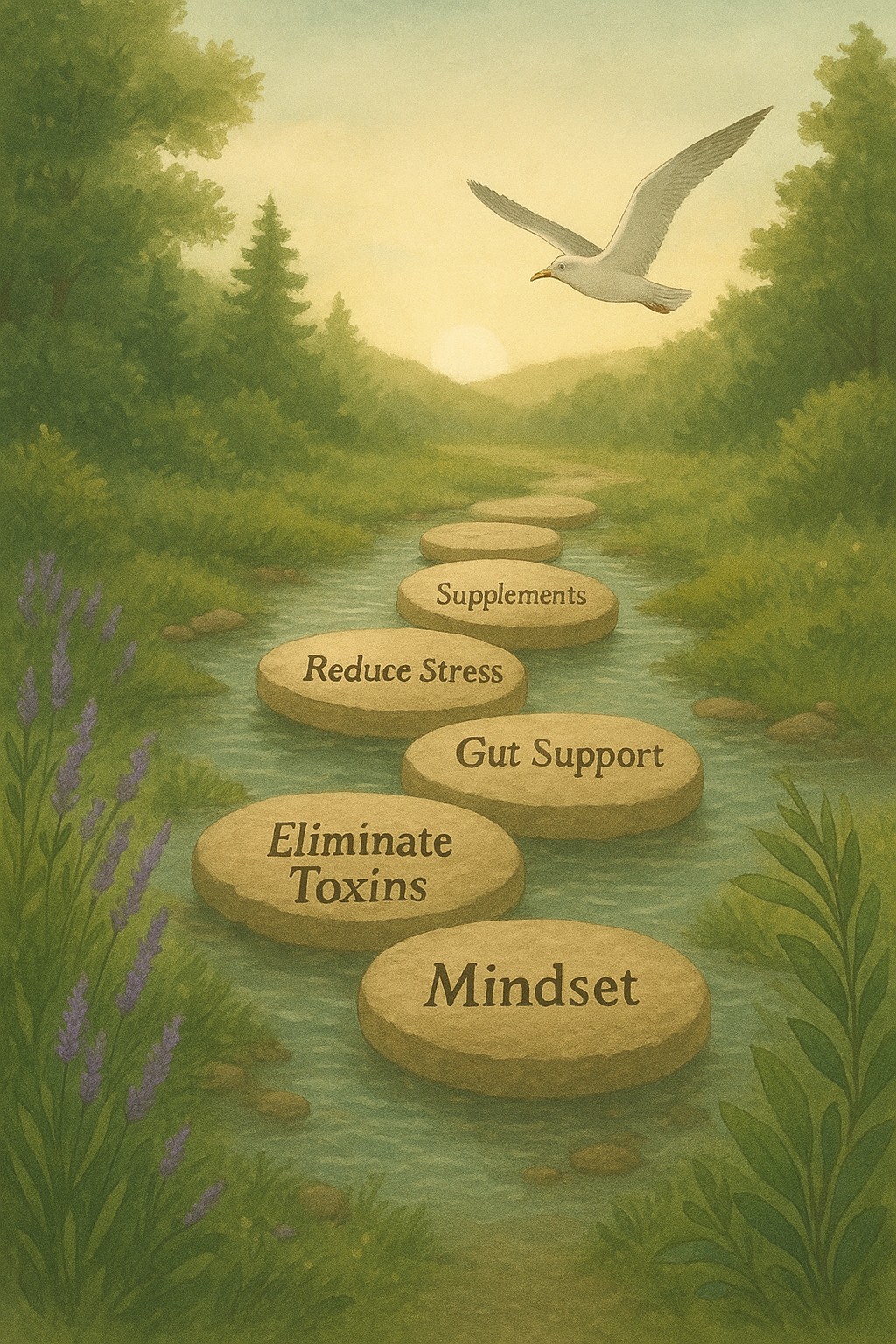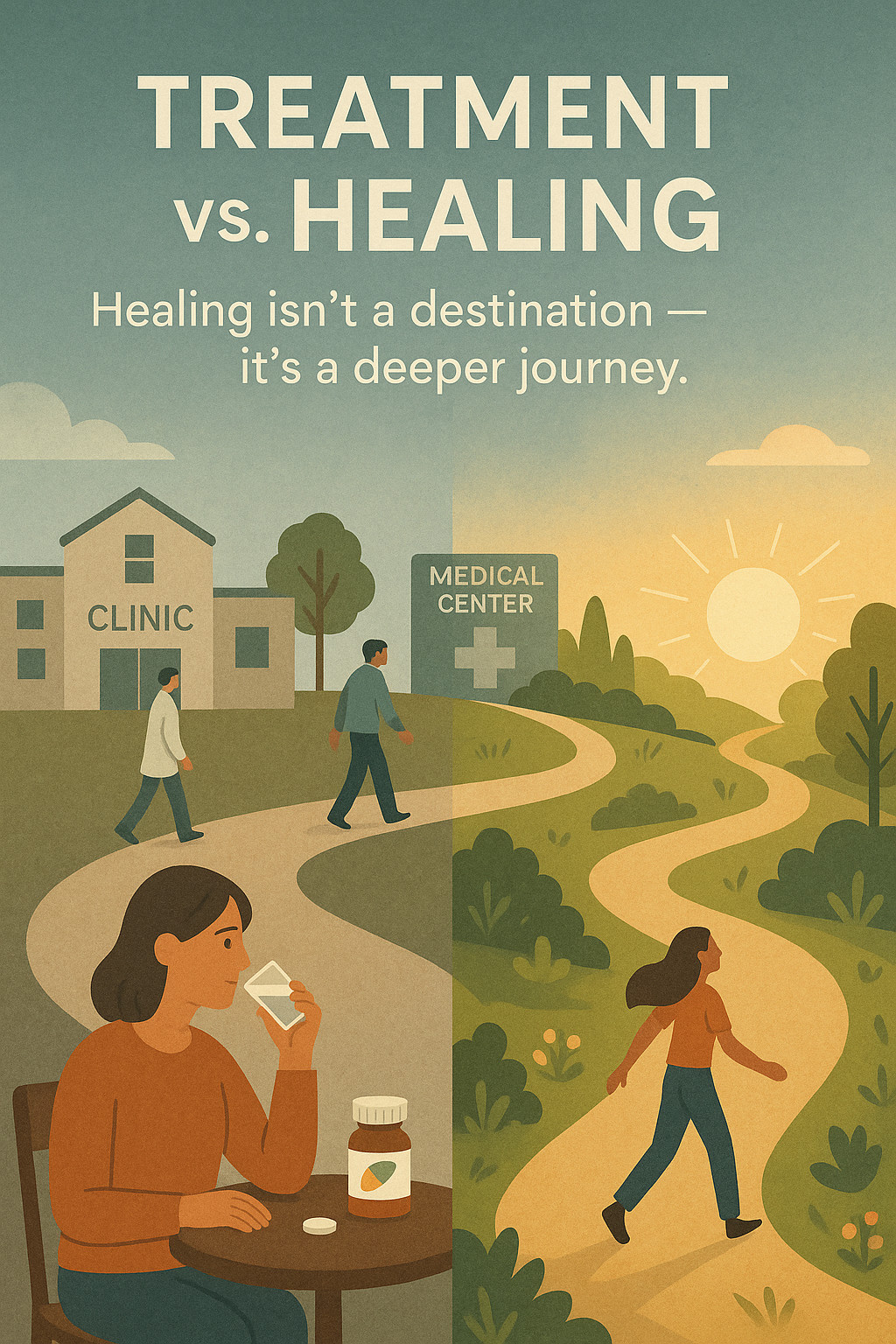
Have you ever felt stuck in a cycle of treatments that never seem to get to the real problem?
Maybe you've been given a diagnosis and told, 'There's no cure." Your doctors are focused on symptom management while you’re silently asking…
“But what about healing?”
It’s a question I had to wrestle with in my own health journey, and today I want to help you understand the powerful difference between treatment and true healing—and why it matters more than you think.
✅ Treatment vs. Healing: What’s the Difference?
1. Treatment is often short-term. Healing is a journey.
Treatment is designed to stabilize or relieve symptoms. That’s important, especially during a crisis. But it doesn’t mean your body is healed—it simply means your symptoms are under control (for now).
Healing, on the other hand, is about restoring your body to balance, so those symptoms don’t keep coming back.
Healing, on the other hand, is about restoring your body to balance, so those symptoms don’t keep coming back.
2. Treatment can be passive. Healing requires participation.
You can be treated by a doctor or specialist, and that can be helpful. But healing involves your active participation: changing what you eat, how you manage stress, what you put on your skin, and how you think.
Healing is personal. It asks more of you—but it also gives so much more back.
Healing is personal. It asks more of you—but it also gives so much more back.
3. Treatment targets the body. Healing involves the whole person.
Modern medicine tends to separate physical symptoms from emotional or spiritual wellbeing. But true healing addresses the whole person—body, mind, and spirit.
Inflammation, for example, can be driven not just by diet but also by stress, toxins, trauma, and even spiritual disconnection.
Inflammation, for example, can be driven not just by diet but also by stress, toxins, trauma, and even spiritual disconnection.
4. Treatment may not lead to freedom. Healing brings restoration.
You can live for years managing a condition with no real resolution.
But healing brings you back to life—more energy, more clarity, more peace. It’s not just about absence of disease; it’s about the presence of wholeness.
But healing brings you back to life—more energy, more clarity, more peace. It’s not just about absence of disease; it’s about the presence of wholeness.
5. Sometimes treatment is necessary—but it’s not the final answer.
There’s no shame in needing treatment. It may be the first step. But don’t stop there.
Ask deeper questions like:
- What caused this imbalance in the first place?
- What does my body need to repair and restore?
- What is inflaming my system?
- What habits are keeping me sick?
🔥 The First Step Toward Healing: Reduce Inflammation Naturally
If you’re ready to move beyond managing symptoms and start addressing root causes, reducing inflammation is one of the best places to begin.
That’s exactly why I recommend the 14-Day Reset
This simple, supported program helps you:
- Remove inflammatory foods
- Flood your body with nutrients
- Rebuild your energy, digestion, and mindset
- Get coaching, encouragement, and recipes in a private group
It’s the same kind of reset that helped me move from just “getting by” to feeling vibrant and hopeful again.
✨ Are You Ready to Reset & begin Healing?
Whether you’re new to this journey or looking for a fresh start, the 14-Day Reset can help you finally shift from treatment to true healing.
📌 Save & Share:
If this blog post resonated with you, share it with someone who feels stuck in survival mode. Healing is possible — and it starts with one simple step.

When you're living with ITP (Immune Thrombocytopenia Purpura), it can feel like your life has been hijacked. The unexplained bruises, constant fatigue, fear of bleeding—it’s enough to make anyone feel defeated. But what if the most powerful healing tool isn’t a medication… it’s your mindset?
The Power of the Words You Speak
If you’re like many ITP warriors, you may have caught yourself thinking or saying:
- “I can’t live like this anymore.”
- “This is a horrible disease.”
- “My life will never be the same.”
- “I’ll be stuck with this forever.”
These thoughts may feel honest in the moment—but they can also become traps.
Dr. Bruce Lipton, author of The Biology of Belief, teaches that our cells respond to what we believe. That means the way we think and speak about our health can literally shape the way our body heals. You’re not just dealing with platelets—you’re dealing with beliefs that either support your body… or sabotage it.
Flip the Script: Mindset Shifts That Encourage Healing
Let’s try something radical. What if you flipped the script?
Instead of saying:
❌ “I have a disease.”
Try:
✅ “I’m healing from a disease.”
❌ “I have a disease.”
Try:
✅ “I’m healing from a disease.”
Instead of:
❌ “This is ruining my life.”
Try:
✅ “This is challenging me to grow in strength and resilience.”
❌ “This is ruining my life.”
Try:
✅ “This is challenging me to grow in strength and resilience.”
Instead of:
❌ “There’s no hope.”
Try:
✅ “Hope may be quiet right now, but it’s still here.”
❌ “There’s no hope.”
Try:
✅ “Hope may be quiet right now, but it’s still here.”
This isn’t just semantics—it’s strategy. You’re choosing to speak life over your body instead of death. That matters.
This Is Not Toxic Positivity—It’s Healing Focus
To be clear, flipping your mindset isn’t about pretending everything is fine. It’s not about ignoring blood test results or pretending you're not afraid.
This is about acknowledging your pain while still choosing a path of possibility and purpose.
You can say, “This is hard” and still believe, “I can heal.”
You can cry and still declare, “I’m stronger than I feel today.”
Speak Life Over Your Platelets: A 7-Day Challenge
Want to try it? Here's a simple challenge:
👉 For the next 7 days, speak one hopeful, healing-focused statement out loud each morning.
Here are a few to get you started:
- “My body was created to heal.”
- “Every day, I’m moving toward better health.”
- “I am not defined by ITP.”
- “I choose hope, even when I don’t feel it yet.”
Even if you don’t believe the words at first, speak them anyway. Speak them until you do.
🌿 Faith for the Journey
If you’re a person of faith, it helps to remember that your mindset isn’t just a mental battle — it’s a spiritual one too. God sees your struggle and walks with you in it. When the road feels uncertain, His Word can anchor your heart and bring peace to your thoughts. You don’t have to face ITP or any health journey alone. As you speak hope over your healing, remember what God speaks over you — strength, purpose, and peace.
Here are a few verses I cling to:
- Isaiah 41:10 – “So do not fear, for I am with you... I will strengthen you and help you; I will uphold you with my righteous right hand.”
- Romans 15:13 – “May the God of hope fill you with all joy and peace as you trust in Him, so that you may overflow with hope by the power of the Holy Spirit.”
- Psalm 103:2–3 – “Praise the Lord, my soul, and forget not all his benefits—who forgives all your sins and heals all your diseases.”
Final Encouragement
You are not a victim of ITP. You are not broken beyond repair. You are a warrior in the middle of transformation.
Flip the script.
Choose healing.
Speak hope.
And watch your body begin to follow.
Choose healing.
Speak hope.
And watch your body begin to follow.
Want more support on your healing journey?
Download my free guide: 3 Ways to Increase Platelets Naturally — filled with practical tips you can implement right away.

When you're living with a condition like ITP (Immune Thrombocytopenia) or working to support your platelet health, it’s natural to want to identify the “one thing” that will fix everything—or the one thing that caused the problem in the first place. Maybe you’ve asked yourself, Did that fast food meal drop my platelet count? Or Will this new supplement finally help? But here's the truth: your body is shaped far more by your daily habits than by a single action.
In fact, this "one-to-one" way of thinking may come from a combination of Western medicine’s reductionist approach and our brain’s natural desire for simplicity and certainty. However, true healing happens through trends, not just triggers.
Let’s dig into the bigger picture of how nutrition and toxin exposure work cumulatively—and what healthy habits actually support better platelet health over time.
The Myth of the “Magic Bullet” (and the “Instant Trigger”)
We’ve been conditioned to think in isolated terms: one drug for one symptom. One bad food that ruins everything. One miracle herb that will cure us. But the human body doesn’t work like a vending machine—it’s a complex, interconnected system. Your immune system, your gut, your liver, your stress levels, and even your emotional health all influence each other.
That one spray of perfume or one night of eating junk food isn’t likely to tank your platelets. But when those choices become daily habits, they can contribute to chronic inflammation, immune imbalance, and poor detoxification—creating an environment where your platelet count struggles to stay stable.
Why Your Daily Habits Matter More Than Occasional Slip-Ups
Think of your health like a savings account. Every healthy habit is a deposit. Every unhealthy habit is a withdrawal. A single purchase doesn’t bankrupt you—but years of poor financial habits will. The same is true for your body.
Over time, the cumulative effects of processed foods, artificial fragrances, chronic stress, and environmental toxins can wear down your immune and detox systems. Conversely, consistent support through nutrient-dense food, clean products, rest, and stress management can build resilience and create an upward trend in health—even if the change feels slow.
What Habits Actually Help Support Platelet Health?
Here’s where it gets practical. If you're looking to improve your platelet count or support your immune system naturally, focus on long-term lifestyle trends instead of looking for a quick fix. These are the areas that matter most:
1. Anti-Inflammatory Foods
Chronic inflammation is often at the root of autoimmune issues like ITP. Focus on whole, colorful foods—especially leafy greens, berries, wild-caught fish, turmeric (with caution), and foods rich in omega-3s. Avoid processed foods, refined sugars, and excessive gluten or dairy if you’re sensitive.
2. Gut Health
Your immune system begins in your gut. Support it with fermented foods like sauerkraut or coconut yogurt, bone broth, prebiotic fibers, and high-quality probiotics. Avoid antibiotics unless absolutely necessary, and be mindful of gut-disrupting ingredients in food and medications.
3. Liver Support
Your liver is your body’s detox powerhouse. It helps process environmental toxins, medications, and even hormones. Support it with lemon water, cruciferous vegetables (like broccoli and cauliflower), beets, dandelion root tea, and plenty of clean water.
4. Reduce Your Toxic Load
Look at what you’re putting on your skin, breathing in your home, and using in your laundry. Swap out artificial fragrances, parabens, and harsh chemicals for clean, non-toxic alternatives. One scented candle might not matter—but daily exposure adds up.
5. Manage Stress
Stress is not just emotional—it’s biochemical. Chronic stress raises cortisol, affects your gut, suppresses your immune system, and can interfere with platelet production. Practice deep breathing, prayer, journaling, walking in nature, or other stress-reducing habits regularly.
What About Supplements?
Supplements absolutely have their place in a healing journey. I personally experienced positive results from Chinese herbal formulas that supported platelet health, balanced my immune system, and aided liver detoxification. However, supplements are not a replacement for foundational lifestyle changes. They work best as part of a bigger strategy—one that includes nourishing food, a low-toxin lifestyle, stress management, and consistent self-care.
The Takeaway: Think in Terms of Trends, Not Triggers
Healing doesn’t come from one meal, one supplement, or one good decision. It comes from hundreds of tiny, repeated choices over time.
So next time you catch yourself worrying about one less-than-perfect choice or putting all your hope in one miracle remedy, pause. Zoom out. Look at the trend. That’s where real change—and real healing—happens.
Want to Go Deeper?
If you're ready to support your platelet health through a holistic approach, check out my ITP GUIDE and my FREE CHECKLIST on reducing toxins at home. Small changes over time really do add up—and you’re not alone on this journey.
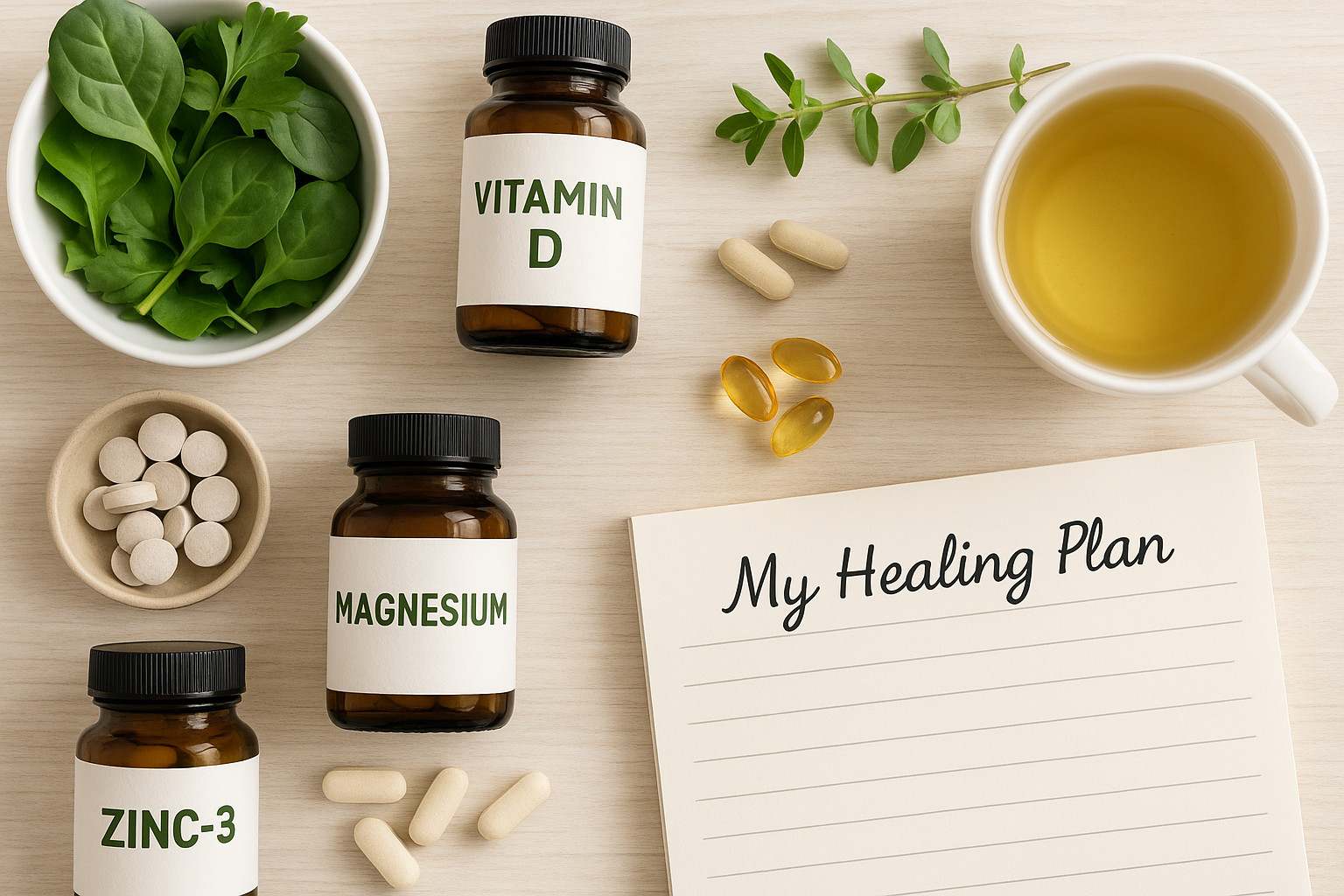
Looking for Natural Ways to Increase Platelets with ITP?
If you’ve been diagnosed with ITP (Immune Thrombocytopenia), a common question is: “What supplements can I take to increase my platelet count naturally?”
As someone who has personally experienced ITP remission and supported many others on this journey, I want to start with this foundational truth:
Supplements Should Not Be Your First Step.
It’s tempting to try a new pill or powder in hopes of a quick platelet boost. But long-term healing starts with lifestyle. Supplements are most effective when combined with:
- Nutrient-rich, anti-inflammatory foods
- Reducing chronic inflammation
- Supporting gut and liver detox pathways
- Removing hidden toxins in your home
- Managing emotional and physical stress
These are the pillars that helped me achieve long lasting remission—and they can support you, too.
Best Supplements for ITP and Immune System Health
Here are some top supplements that may support people with ITP and low platelet counts. Always consult with your healthcare provider before adding anything new to your routine.
☀️ Vitamin D for ITP
- Benefits: Supports immune balance and platelet production.
- Check: Have your vitamin D levels tested. Aim for 50–80 ng/mL.
- Note: It’s fat-soluble, so don’t overdo it without supervision.
💪 Vitamin C to Strengthen Platelets
- Benefits: Boosts immunity and helps maintain healthy blood vessels.
- Sources: Citrus fruits, bell peppers, kiwi, or 500–1000 mg/day supplements.
- Watch out: Too much may cause digestive upset.
🧠 B12 & Folate (Methylated B Vitamins)
- Benefits: Crucial for DNA repair, red blood cell formation, and immune function.
- Tip: Look for methylcobalamin and methylfolate.
🧬 Zinc for Immune Function
- Benefits: Short-term support for the immune system and wound healing.
- Dosage: 15–30 mg/day.
- Caution: Prolonged use may lower copper levels.
🥬 Iron (Only If Deficient)
- Benefits: Helps with energy if you have low ferritin or anemia.
- Important: Supplement only with confirmed deficiency.
🧪 Omega-3 Fatty Acids (Fish Oil)
- Benefits: Lowers inflammation and supports immune health.
- Caution: Can thin the blood at high doses—check with your doctor. Tip - try adding foods that contain Omega-3 if you are concerned about taking a separate supplement.
🌿 Chinese Herbal Remedies for ITP
- Why consider them: Under the guidance of a trained practitioner, they can support immune regulation & platelet health.
- Personal note: Chinese herbs were a vital part of my healing path to remission. I've included a link at the end if you'd like more information on this topic.
Goji Berries (Wolfberries)
- Why consider them: Research suggests that the polysaccharides in goji berries (Lycium barbarum), often called LBP, may help support platelet health. In a mouse model of ITP, these polysaccharides were shown to increase platelet counts and reduce oxidative stress — which is meaningful because oxidative damage can worsen platelet destruction in ITP. Beyond platelet support, goji berries also have immunomodulatory benefits: they appear to help balance immune activity by influencing cytokines and boosting certain immune-cell functions.
- Personal note: I've been using goji berries (both dried berries and pureed in juice form) for over ten years. They are a part of my daily wellness routine and have helped me support my immune system, as I don't have a spleen.
To read more about how I use goji berries in my daily wellness routine (and why I include them in my 14 Day Reset), check out my article on wolfberries and platelet health.
Supplements to Avoid with ITP or Use with Caution
Some herbs and natural remedies can interfere with platelet function or increase bleeding risk. Be cautious with the following:
🌿 Turmeric / Curcumin
- Why be cautious: Mixed evidence—some studies suggest it supports healthy platelets, others indicate it may impair platelet function. You may want to check out the research and decide for yourself.
🌿 Ginkgo Biloba
- Why be cautious: May increase bleeding risk.
🌿 White Willow Bark
- Why avoid it: Acts similarly to aspirin; generally not safe for those with ITP.
Final Thoughts: Lifestyle First, Supplements Second
If you're navigating ITP, remember: You don’t have to figure everything out overnight. You are not behind. You are right on time for your healing journey.
Supplements can help, but they aren’t the whole story. Your best chance at remission and lasting health comes from rebuilding the foundations—nutrition, detox, rest, emotional peace, and spiritual strength.
You’ve got this. Healing is possible.
💬 Get More Support on Your ITP Journey
Join my free Facebook group: Platelets, Plants, and Prayers — a supportive community for people with ITP looking for natural healing.
Explore helpful resources created with you in mind:
- ✅ ITP Guide that outlines my entire healing process: ITP GUIDE
- ✅ Chinese Herbal Medicine for ITP: Chinese Herbs as a Treatment for ITP
- ✅ Meal Planning Masterclass: Autoimmune Meal Planning Made Easy
Keep learning. Keep believing. Healing is possible.
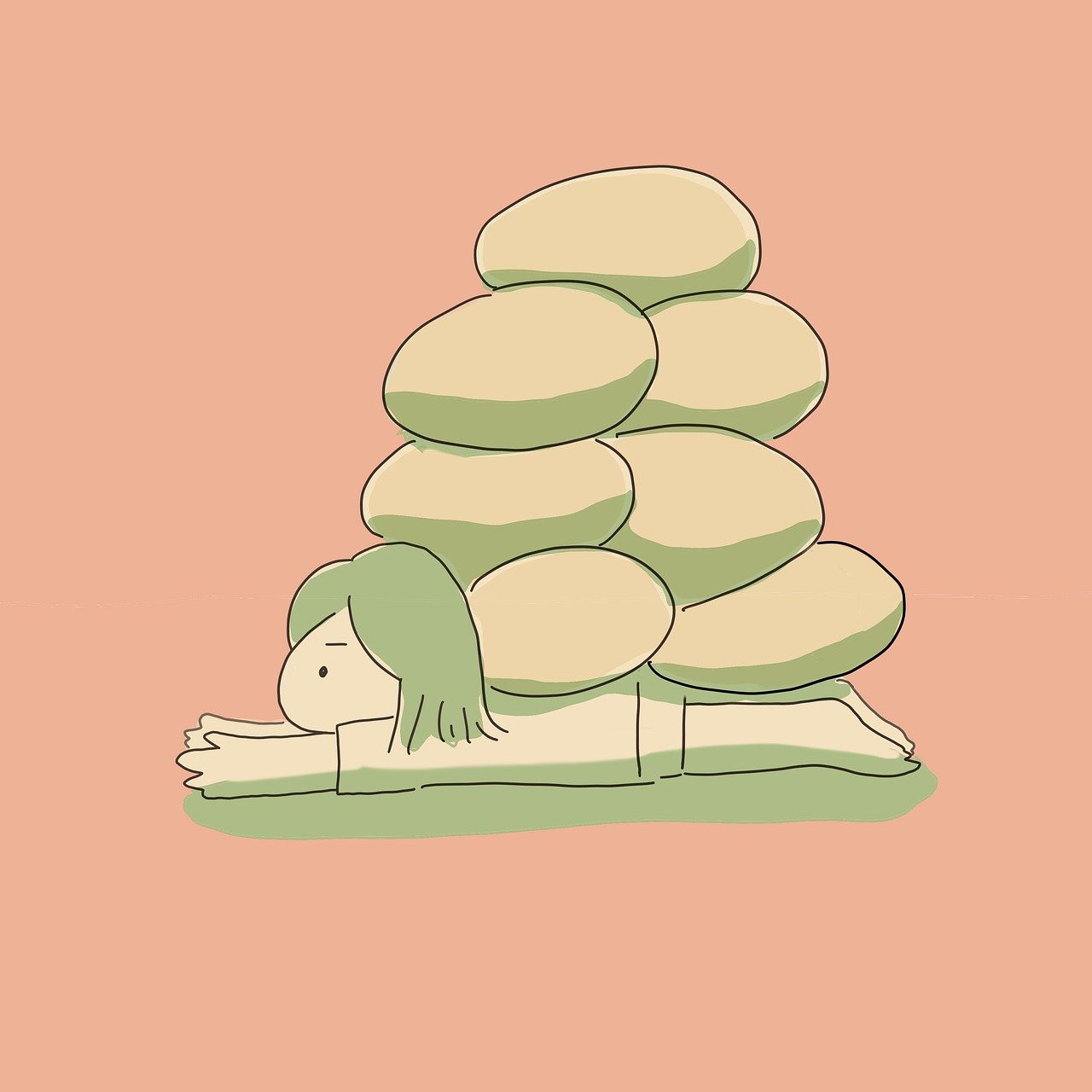
Fatigue is one of the most common and misunderstood symptoms of ITP (Immune Thrombocytopenic Purpura). For many warriors, it becomes one of the hardest challenges to navigate. It’s not the kind of tiredness that a nap or a full night’s sleep can solve. Instead, it’s a deep, lingering exhaustion that feels like it’s always present. Understanding why fatigue is so prevalent in ITP and knowing how to manage it can empower warriors to take control of their energy levels and improve their quality of life.
Why It’s Not “Just Being Tired”
Unlike everyday tiredness that usually responds well to sleep, ITP-related fatigue is multifaceted and often persistent. It’s a chronic exhaustion tied to both physical and emotional factors. For many, it feels like a never-ending battle, even after a full night of sleep. This type of fatigue can affect everything from mental clarity to physical stamina, making daily tasks feel like monumental efforts.
The Key Causes of Fatigue in ITP
Several interconnected factors contribute to why ITP warriors experience chronic fatigue:
- Inflammation: ITP is an autoimmune condition that leads to chronic inflammation. The immune system’s attack on platelets releases inflammatory chemicals that drain your energy reserves.
- Medication Side Effects: Treatments like steroids (e.g., prednisone) and immunosuppressants can cause fatigue by disrupting sleep, weakening muscles, and depleting the body’s energy over time.
- Low Platelet Count: Platelets help with blood clotting. When low, they strain the body, requiring more energy to function.
- Emotional Toll: Anxiety, stress, and depression related to chronic illness can emotionally exhaust you, leading to further fatigue. Studies show that the psychological burden of chronic illness can drain your body’s energy reserves.
- Sleep Disturbances: Chronic illness, stress, and medications interfere with sleep, making it harder to restore your energy.
Physical vs. Emotional Exhaustion
Fatigue with ITP isn’t just physical—it’s emotional, too. Recognizing both types of exhaustion is key to understanding how to manage them.
Physical Exhaustion
- Weakness in the limbs
- Difficulty concentrating or staying awake
- Persistent tiredness even after rest
Emotional Exhaustion
- Feelings of overwhelm or hopelessness
- Increased anxiety about treatment or long-term health
- Lack of motivation to engage in daily tasks
Both types of fatigue require a holistic approach to manage.
Managing Fatigue: Nutrition, Rest, and Pacing
Managing fatigue with ITP requires more than just sleep. It’s about a strategic approach that includes nutrition, rest, and energy management.
Nutrient-Dense Foods for Sustained Energy
Eating the right foods fuels your body and helps manage fatigue:
- Anti-inflammatory foods: Leafy greens, berries, fatty fish like salmon, and turmeric can reduce chronic inflammation that contributes to fatigue.
- Protein and healthy fats: Protein-rich foods (chicken, eggs, beans) and healthy fats (avocados, olive oil, nuts) help stabilize blood sugar and provide consistent energy.
- Iron-rich foods: ITP warriors often face low iron levels. Include spinach, lentils, and lean meats to boost energy.
Rest and Pacing
- Rest cycles: Take short breaks throughout the day to prevent burnout.
- Pacing: Break tasks into smaller steps and pace yourself to avoid overexertion.
Sleep Hygiene
Prioritize quality sleep by maintaining a consistent bedtime routine and creating a peaceful sleep environment. Avoid caffeine and heavy meals before bed, and try incorporating a relaxation technique (such as deep breathing or gentle stretching) before sleep.
Research-Based Strategies for Managing Fatigue in ITP Warriors
Several studies support strategies that help ITP warriors manage fatigue effectively:
1. Stress Reduction Techniques
Chronic stress worsens fatigue by raising cortisol levels and increasing inflammation. Mindfulness, meditation, and yoga have been shown to significantly reduce fatigue.
2. Anti-Inflammatory Diets
Research shows that an anti-inflammatory diet improves energy levels. Omega-3s, fiber-rich vegetables, and herbs like turmeric and ginger can reduce inflammation and boost energy.
3. Exercise
It may seem counterintuitive, but low-impact exercise (like walking or yoga) can increase energy. Studies show that regular physical activity improves mitochondrial function, boosting overall energy levels.
4. Cognitive Behavioral Therapy (CBT)
CBT can address both emotional and physical fatigue. Studies indicate that CBT significantly improves energy levels and reduces feelings of overwhelm in those with chronic illness.
What Helped Me REDUCE STRESS & Reclaim My Energy
Here are some strategies that have helped me reclaim my energy:
- Setting Boundaries: Saying no to draining commitments.
- Pacing: Breaking tasks into manageable steps and taking breaks.
- Quality Sleep: Creating a peaceful environment to enhance sleep quality.
- Anti-inflammatory Diet: Eating foods that support my immune system.
- Exercise: When my platelets were low, I found restorative yoga very helpful. After I got into remission, I found a love of Martial Arts and Tai Chi.
- Breathwork: Using deep breathing and prayer or meditation to reduce stress.
- Aromatherapy: Some essential oils are calming; while others are invigorating. I use a wide range of essential oils throughout the day based on my body's needs.
Final Thoughts
Fatigue is a significant part of living with ITP, but it doesn’t have to control your life. By understanding the root causes, managing stress, fueling your body with energy-building foods, and adopting research-backed strategies like mindfulness and pacing, you can significantly reduce fatigue’s impact and regain your vitality.
Remember, managing fatigue with ITP is a journey—be kind to yourself, and give yourself permission to rest when needed.
MY FAVORITE Anti-Inflammatory Protocol
I bet you noticed that reducing inflammation can be a huge part of healing, reducing fatigue, and increasing energy. Check out my "11-Day Jumpstart Anti-Inflammatory Protocol" for tips, meal plans, and easy-to-follow steps to help reduce inflammation and increase energy.
Tai Chi Breathing - WHEN YOU'VE ONLY GOT A FEW MINUTES TO REDUCE STRESS
Stress management is key in combating fatigue. Watch my Tai Chi Breathing video to learn simple, effective techniques to relax your body and calm your mind.


